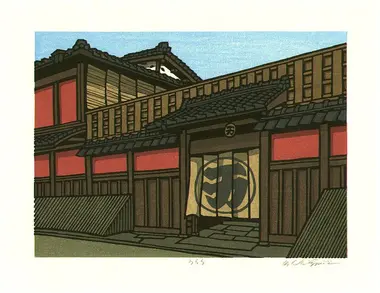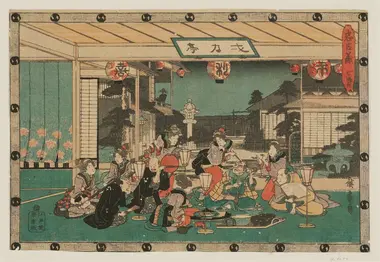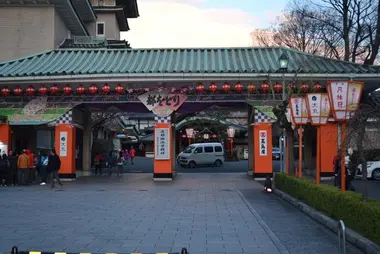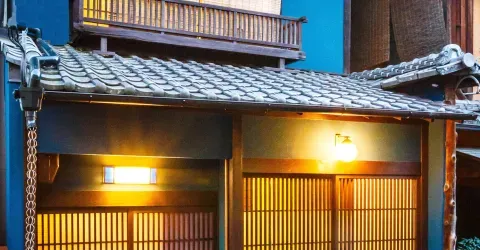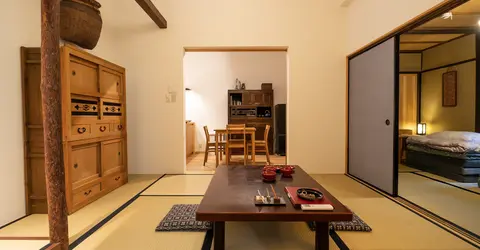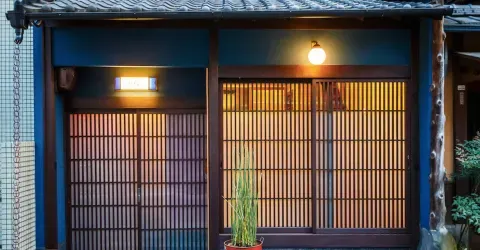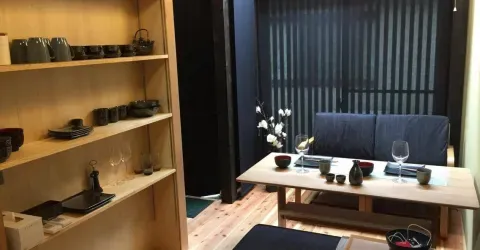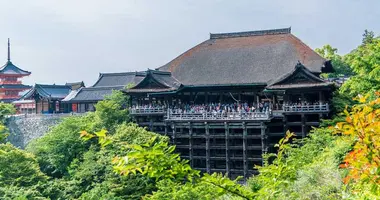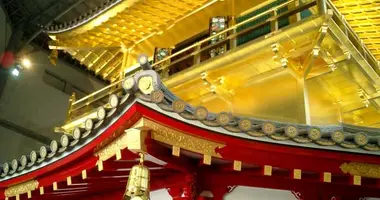Hanamikoji Street
Tradition is good
Hanamikoji Street is the main hanamachi street of Gion-Kōbu in Kyoto. At nightfall, many tourists flock there hoping to see a geisha leaving a tea house (ochaya). An appearance as magical as it is furtive…
Behind the machiya
In the heart of Gion, Hanamikoji Street runs for just over a kilometer between Sanjo Avenue and Kennin-ji Temple. The machiya lining proudly along this small cobbled road are wonderfully preserved treasures. Behind the facades, protected from outside gazes by kimusuko (wooden trellises) and from the weather by inuyarai (curved bamboo barriers), hide ochaya (tea houses) and high-end restaurants . The street consists of a northern part and a southern part, separated by Shijo Avenue. However, the traditional and refined atmosphere is only present in the southern part. If you continue your walk north of the Shijodori, you will find a lively district with many bars but devoid of the particular charm of hanamachi . In the evening, when the lanterns light up, the street is somewhat a victim of its own success. The flow of tourists and the continual ballet of taxis could disturb your contemplative stroll.
To read: What is it to be a geisha?
A legendary ochaya
At the corner of Hanamikoji Street and Shijo Avenue is the Ichiriki ochaya , the oldest and most prestigious establishment in Gion. This ochaya with vermilion walls has been welcoming political figures and powerful businessmen who have come to have fun for more than three hundred years. Note that access to this establishment is only possible by invitation ; an entrance fee that regulars pass on from generation to generation. But prestige is not the only reason for its fame. The tea house is indeed linked to two famous historical events.
At the very beginning of the 18th century, the chief of the 47 ronin , Oishi Kuranosuke, became a loyal client of the ochaya . After the death of their daimyô Naganori Asano in 1701, the 47 samurai dispersed to better foment their revenge against Yoshinaka Kira. Wishing to deceive the mistrust of the authorities and spies of Kira, Oishi settles in Kyoto and seems to lead a life of debauchery where all is game and drunkenness. The clever trick works wonders. Convinced of the annihilation of the former samurai, Kira relaxes his vigilance. In December 1702, the 47 ronin put their plan into action and carried out their revenge.
See also: The temple of the 47 ronin
At the end of the Edo period (1603-1868), the luxurious ochaya became the meeting place for people wishing to overthrow the shogun . Here again, the tea house serves as a subterfuge in these meetings, disguised as evenings with friends. Ukiyo-e and shin-hanga prints immortalize these events.
More recently, this high place of entertainment and shenanigans served as the setting for the main plots of Arthur Golden's book "Memoirs of a Geisha".
The story of a creation
Despite the presence of the hundred-year-old ochaya , Hanamikoji Street with the sweet scent of old Japan is quite recent since it was only created at the beginning of the Meiji era (1868-1912) . In Edo period, there was another hanamachi in Shijodori. Thus, the entrance to the Ichiriki ochaya, currently on the Hanamikoji street side, was on the Shijodori. The political upheavals of the Meiji Restoration and the work on the tramway at the start of the 20th century led to the relocation of the hanamachi .
In 1871 in the wake of the Haibutsu kishaku which led to the destruction and confiscation of property belonging to Buddhist temples , the municipal authorities requisitioned half of Kennin-ji , the enclosure of which extended almost to the Ichiriki ochaya. In 1874 , the association of Gion tea houses bought the confiscated land to develop the new hanamachi there by creating Hanamikoji Street. At the southern end of the street, the Gion Corner offers performances of traditional dances and music, tea ceremonies and ikebana initiations . Something to accentuate a little more, the unique atmosphere of Hanamikoji Street.
Our homes in the Gion district
Address, timetable & access
Address
Timetable
5 min walk from Gion Shijô metro station on the Keihan line or 5 min from the Gion stop on bus lines 100, 201 and 206.Price
Free

